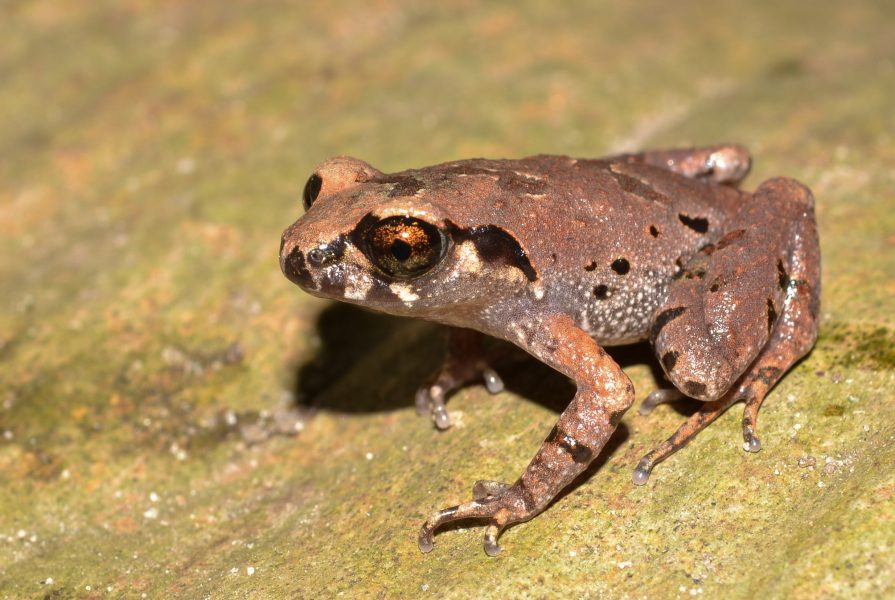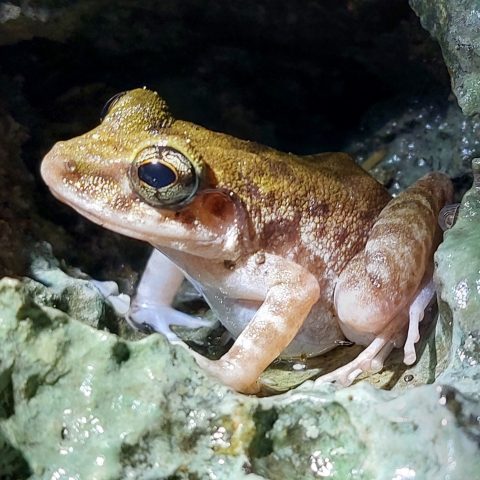Conservation Actions
Conservation Actions In-Place
This species is known from Son Tra Nature Reserve in Viet Nam (Nguyen et al. 2018).
Conservation Needed
Additional protection of this species' habitat may be needed.
Research Needed
Addressing the lack of data is the first step towards ensuring this species' long-term persistence; further research on its true distribution, threats, and the size and trends of its population would inform conservation decisions.
Location Information
This species is known only from 380 - 645 m asl in Son Tra Nature Reserve, Da Nang, Viet Nam (Nguyen et al. 2018), though the species may also occur at slightly lower elevations. Of the network of very small drainage basins that comprises most of coastal Da Nang (U.S. Geological Survey 2000), the only intact forest occurs on the small hilly area on the north end of Son Tra Peninsula. Other species in the Leptobrachella applebyi group appear not to disperse across drainage basins (Rowley et al. 2015). Thus, this species is very likely a point endemic, with an estimated extent of occurrence (EOO) of 19 km2, consisting of only a single threat-defined location.
Geographic Range
Extant
Viet Nam
Population Information
Very little is currently known about this species' population size and trends except that it was described from eleven adult males, two gravid females and two juveniles collected between 2012 and 2013 (Nguyen et al. 2018), and has been detected during seven surveys from 2012-2015 (L. Nguyen unpubl. data August 2020). Further research is warranted to determine the species' relative abundance and trends, however ongoing habitat loss in protected areas throughout Southeast Asia (Spracklen et al. 2015) is likely causing some declines in this forest-associated species.
Threats
Habitat loss and degradation due to rapidly expanding agriculture is an ongoing threat to biodiversity throughout Southeast Asia (Sodhi et al. 2009). In addition, protected areas in tropical Asia are often fragmented by roads due to lack of buffer zones; therefore, these areas are usually disturbed by the harvesting of forest products and hunting (Ngopraset et al. 2007). Both of these are significant threats in Viet Nam (Ngopraset et al. 2007). The loss of forested habitats in Da Nang, Viet Nam is also caused by urbanisation and conflicts between urban and coastal development and sustainable coastal management (Tanner et al. 2009), as well as by land clearing for tourism activities (L. Nguyen pers. comm. August 2020). This species is likely forest-dependent and thus threatened to a high degree by habitat loss.IUCN Red List Account Link
Please click here to see the species' IUCN Red List Account page.Photo Credits
Luan Nguyen



